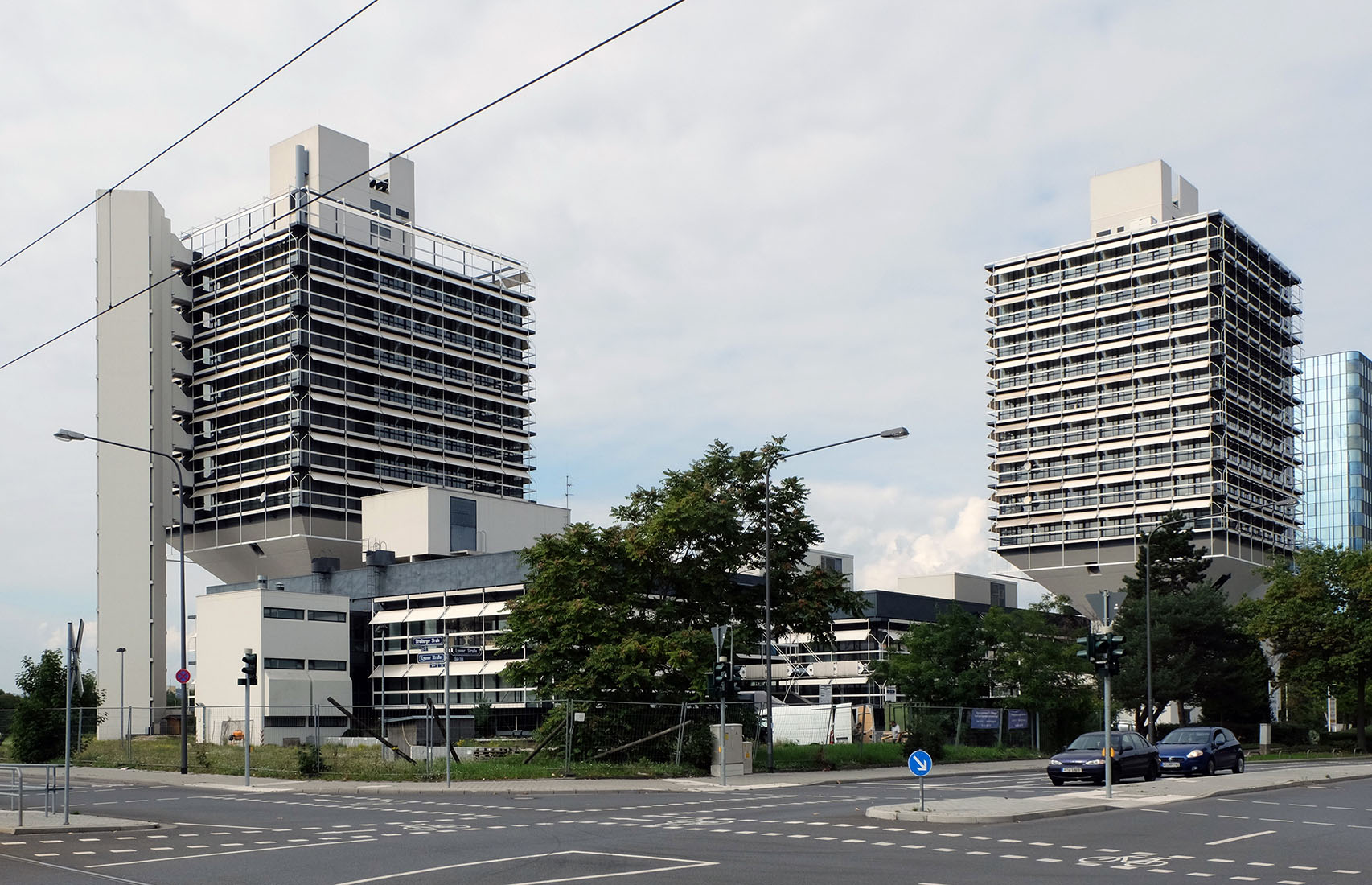 |
 |
 |
 |


Olivetti Centre
Lyoner Strasse 10, Frankfurt
1968 - 1972
The Italian company Olivetti, well known for their superior design quality for office machines, also emphasized good quality design for their company buildings.
They employed various renowned architects such as James Stirling, Kenzo Tange, Louis I. Kahn or Egon Eiermann. The administrative and training center of
Olivetti Germany is located in Frankfurt's Niederrad business district.
The design of the complex has been strongly influenced by different aspects. The plot, which is located near the highway, has a relatively small area and is in the vicinity
of a 50 m high skyscraper. The spatial requirements of Olivetti were very diverse. They demanded among other spaces administrative offices for 350 permanent staff
and 17 training rooms of different sizes for 150 apprentices, a sales office, showrooms, workshops, storerooms, a catine, a guest house with about 150 bedrooms,
three houses and 200 car parking lots. In addition, the building regulations demanded that the paved exterior area could not be bigger than 20 percent of the land area.
These conditions led to build two high-rise buildings as close as possible to the low-rise buildings. By this arrangement, the exigencies of the building regulations were met.
The office block and the larger low-rise building form a self-contained functional unit. The mentioned low-rise building contained training rooms on the upper floor
while the ground floor housed the sales office, the exhibition and the workshop rooms. The guest house and the smaller low-rise building, containing a restaurant and kitchen upstairs
as well as leisure and recreation rooms on the ground floor, form a second functional unit. The two low-rise buildings are connected with a glass bridge, which continues in the
interior in the central section. This middle section contains all technical premises that are necessary for the functioning of a large hall, and serves as middle support for the ceilings.
The low-rise buildings are covered by a truss construction made of steel. The floor levels of reinforced concrete are freely positioned on the inside.
All partition walls in the interior are of reduced height and do not interfere with the spaciousness and the hall-like character of the low-rise buildings.
The high-rise floors are made of steel and are supported by the shaft and chalice made of reinforced concrete. Responding to the scarce land size,
the skyscrapers are streamlined in the lower area and are located as close as possible to the halls. Thus, the lowermost portion of the towers
is a pure supply core with stairs, elevators and building technology. The full stories only start from the 5th floor upward.
As a consequence of the chalice-shaped transition from the core to the full stories they are raised as far above the halls, so that excessive heat and
glare radiation from the flat roofs could be prevented. The original intention was to make one of the two towers as a counterpart of the other as an
upside-down chalice. In the end the two towers were executed nearly identical, with only differences in the number of storeys (7 respectively 9).
The detached emergency stair towers are connected by bridges with the circumferential balconies of skyscrapers.
For the eventual expansion of the complex, the low-rise buildings were intende for an extension in the north and south by one construction axis each.
Another skyscraper could be built on the north-west of the larger hall. The design became an exemplary model project for steel construction.
The filigree steel bars on the facade should mitigate the simple austerity of the buildings in reinforced concrete. The complex is designed according to
Egon Eiermann's credo that buildings should be designed differently depending on usage, so that the functions and ways are readable.
In the years 1995 to 2000, the building was modernized in accordance with the original design, and thus unmade the conversions from the eighties.
Only after the entire complex has been renovated, it was declared a national monument.